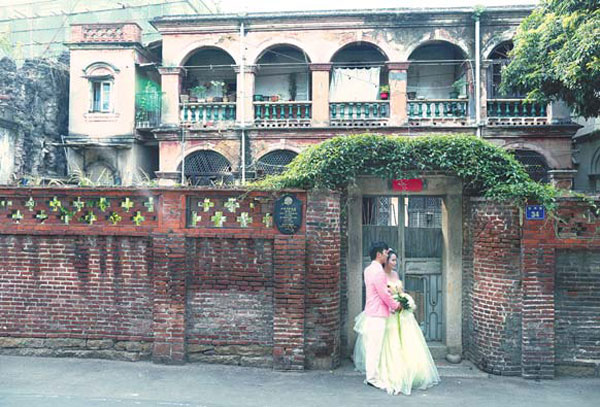 |
|
A young couple pose for their pre-nuptial photo shoot at Gulangyu Island in Xiamen. [Zhu Xingxin / China Daily]
|
Most of the buildings' walls have a curvilinear outline and are referred to as the Saddle Wall. A closer look at the walls reveals tiny seashells embedded in them. According to historians, sand from the area's beaches were used to make the structures' bricks.
The area boasts more than 150 ancient buildings and a majority of them were former homes for prominent historical figures. Qing Dynasty imperial envoy Lin Zexu, regarded as a national hero because of his fight against the British opium trade in Guangzhou, and Yan Fu, a Chinese scholar and translator, all resided in the area.
Patience is needed when you stroll around the alleys and lanes because every house has its own distinct character. In the Double Plum Study, you have to go through rockeries to reach different halls. The well-preserved ancient furniture on display and the ornamental latticed windows that are shaped like flowers give off a refined touch.
With a variety of old and famous restaurants on Nanhou Street, the area is also a nice spot for dining. Yuwan, or fishball, is a signature Fuzhou snack that you don't want to miss. Made from the minced meat of eel or freshwater fish and shaped into balls, the soft and spongy yuwan makes for a savory meal.
Fuzhou is one of the hottest cities in the country, so try not to visit in the summer. If you find yourself in Fuzhou in the searing heat, tea shops on Nanhou Street serve the local jasmine tea to help you beat the heat.
We Recommend:
